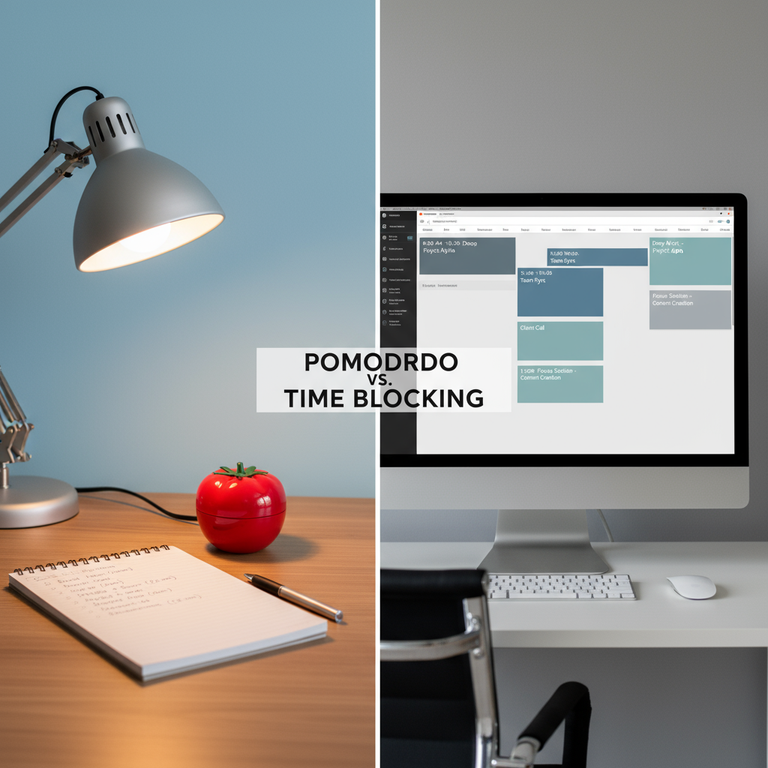Chronic Procrastination: Why Your Brain Resists (and 5 Psychological Tactics to Beat It)
We all procrastinate. We all put off tasks, from minor chores to major projects. But for many, it’s not an occasional habit; it’s a chronic, debilitating cycle. This is Chronic Procrastination. It’s the persistent and painful gap between intention and action, and it often comes with a heavy dose of guilt, anxiety, and self-loathing.
The most common misconception about Chronic Procrastination is that it’s a symptom of laziness, poor time management, or a lack of discipline. This is fundamentally wrong. If it were that simple, a new planner or a “just do it” attitude would be enough. But as chronic procrastinators know, it’s never that easy. You *want* to do the work, but you find yourself physically unable to start.
The truth is, Chronic Procrastination is not a character flaw. It is a complex psychological behavior, deeply rooted in our brain’s emotional regulation system. Your brain isn’t resisting because you’re lazy; it’s resisting because it perceives the task as a *threat*. This guide will explain why your brain resists and offer five practical, psychological tactics to beat it.
The Real Reason You Procrastinate: It’s About Feelings, Not Logic
The core of Chronic Procrastination is a battle between two parts of your brain: the limbic system (your emotional, “lizard” brain) and the prefrontal cortex (your rational, planning brain).
Your prefrontal cortex is logical. It says, “We need to finish this report. It’s important for our career, and the deadline is Friday.”
But the limbic system, which includes the amygdala (your threat detector), feels something different. It associates the task with negative feelings: it’s boring, it’s difficult, it’s overwhelming, or you’re afraid of failing. To your limbic system, this negative feeling is a *threat*. Its one and only job is to make the threat go away, *right now*.
How does it make the threat go away? By getting you to do something more pleasant, like checking social media, watching a video, or tidying your desk. This provides an immediate, temporary relief from the negative feeling. You have successfully “avoided the threat.” This is why your brain resists. It’s a short-term, emotional decision that overrides your long-term, logical plan.
Why Your Brain Resists: The 3 Main Psychological Triggers
To beat Chronic Procrastination, you have to understand exactly what “threat” your brain is trying to avoid. It usually falls into one of these three categories.
1. The Task Itself is Aversive
This is the simplest trigger. The task is just unpleasant. It might be:
- Boring: Like filling out a spreadsheet or an expense report.
- Frustrating: Like debugging a piece of code.
- Unstructured: The goal is vague, like “be healthier” or “write a book.”
Your brain seeks pleasure and avoids pain. A boring or difficult task is registered as “pain,” and your brain will fight you to avoid it.
2. The “Perfectionism” Trap (Fear of Failure)
This is one of the most powerful drivers of Chronic Procrastination. It’s not that you’re afraid of the task; you’re afraid of the *outcome*. Your self-worth is so tied to the result that your brain decides it’s safer to *not try* than to try and produce something that is less than perfect.
This “all-or-nothing” thinking creates unbearable pressure. The feeling of “this has to be perfect” is a massive threat, so your brain “protects” you by preventing you from even starting. You can’t fail at something you never begin.
3. The “Instant Gratification” Economy
We live in a world that has rewired our brains for immediate rewards. Every notification, “like,” and new email provides a tiny hit of dopamine. Your brain gets used to this fast, easy reward loop.
A long-term project, by contrast, has a reward that is far in the future. Your brain, now trained to expect instant results, simply doesn’t have the patience. It chooses the immediate, guaranteed dopamine of a cat video over the distant, abstract reward of a completed project. This is a primary cause of modern Chronic Procrastination.
5 Psychological Tactics to Beat ‘Chronic Procrastination’
You cannot win a fight against your brain with brute force (“willpower”). You must use smarter, psychological tactics to beat it. You have to negotiate with your limbic system, lowering the perceived “threat” of the task so you can get started. Here is how to beat procrastination.
Tactic 1: The 5-Minute Rule (Lowering the Activation Energy)
The “threat” is always highest *before* you start. The activation energy required to begin is the biggest hurdle. The 5-Minute Rule is a negotiation tactic.
Tell your brain: “We are just going to do this for five minutes. That’s it. After five minutes, we can stop if we still hate it.” This makes the task seem tiny and non-threatening. The fear is neutralized. What happens almost every time? You get started, and “momentum” takes over. The task is never as bad as your brain imagined, and you end up working for 30 minutes or more.
Tactic 2: Break It Down Until It’s Not Intimidating
Chronic Procrastination thrives on vague, large tasks. “Write the report” is a terrifyingly large “threat.” Your brain doesn’t even know where to begin. You must break it down into laughably small, concrete steps.
“Write the report” becomes:
- Open a new Word document.
- Title the document.
- Write down 5 bullet points for the main sections.
- Find one statistic for the introduction.
Each of these steps is a 2-minute, non-threatening task. You are “slicing” the task so thin that your brain no longer registers it as a danger.
Tactic 3: Practice Self-Compassion (Break the Guilt Spiral)
This may be the most important tactic. When you procrastinate, you feel guilty. This guilt, in turn, makes you feel bad about yourself, which lowers your energy and self-esteem. This makes you *more* likely to procrastinate in the future to avoid these bad feelings. It’s a vicious downward spiral.
Research shows that self-compassion is a powerful antidote to Chronic Procrastination. Forgive yourself for procrastinating. Acknowledge that you had a moment of struggle, but that it doesn’t define you. This self-forgiveness breaks the guilt spiral and allows you to approach the task fresh, without the baggage of your past avoidance.
Tactic 4: “Temptation Bundling”
This tactic, coined by researcher Katy Milkman, directly addresses the instant gratification problem. You “bundle” a task you *want* to do with a task you *need* to do.
- “I am only allowed to listen to my favorite podcast *while* I am doing my laundry.”
- “I am only allowed to get my favorite coffee *after* I have cleared my inbox.”
You are attaching an immediate reward to the aversive task, which “tricks” your brain into looking forward to it. This is one of the most effective psychological tactics to beat it.
Tactic 5: Create an “Intention Implementation” (The When/Where/How)
Vague intentions are useless. “I’ll work on the project tomorrow” is a recipe for failure. You need to be hyper-specific, creating a clear “trigger” for the behavior.
Use this formula: “When [SITUATION X] happens, I will perform [ACTION Y] in [LOCATION Z].”
Example: “When my coffee finishes brewing at 9 AM, I will immediately sit at my desk (not the sofa) and write 3 bullet points for my report.” This creates a pre-loaded “program” for your brain to run, removing the friction of in-the-moment decision-making.
Conclusion: From Resisting to Beginning
Chronic Procrastination is not a sign of weakness; it’s a sign that your brain is trying to protect you from perceived negative feelings. The solution is not to “try harder,” but to “negotiate smarter.”
Stop fighting why your brain resists and start working *with* it. Lower the stakes. Break down the task. Forgive yourself for setbacks. Attach immediate rewards. By using these psychological tactics, you can gently guide your brain past the “threat” response and into a state of focused, productive, and—most importantly—less stressful work. The goal is not perfection; the goal is simply to begin.







